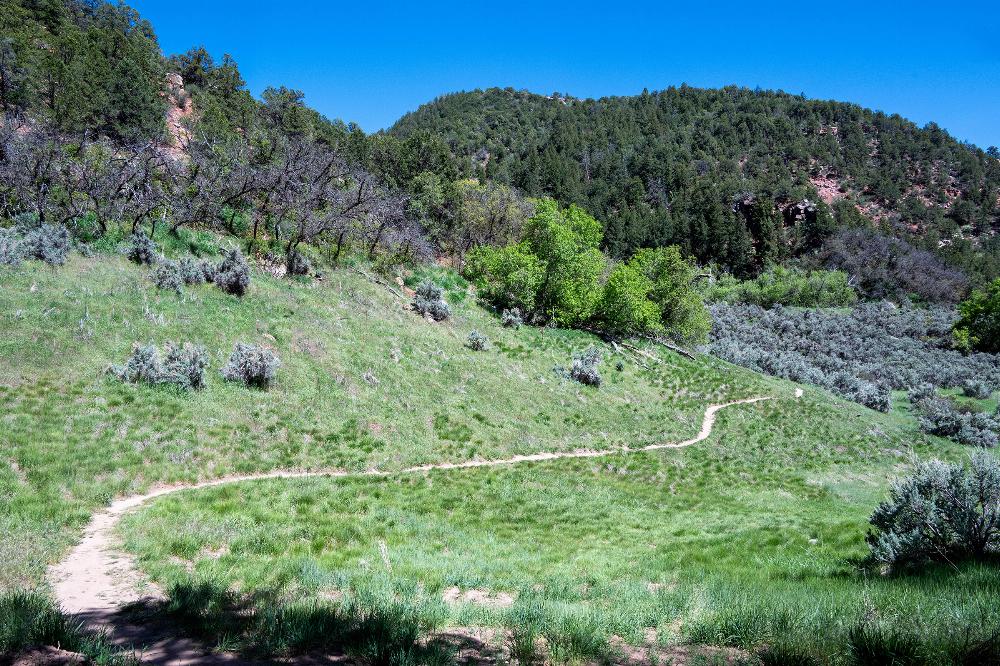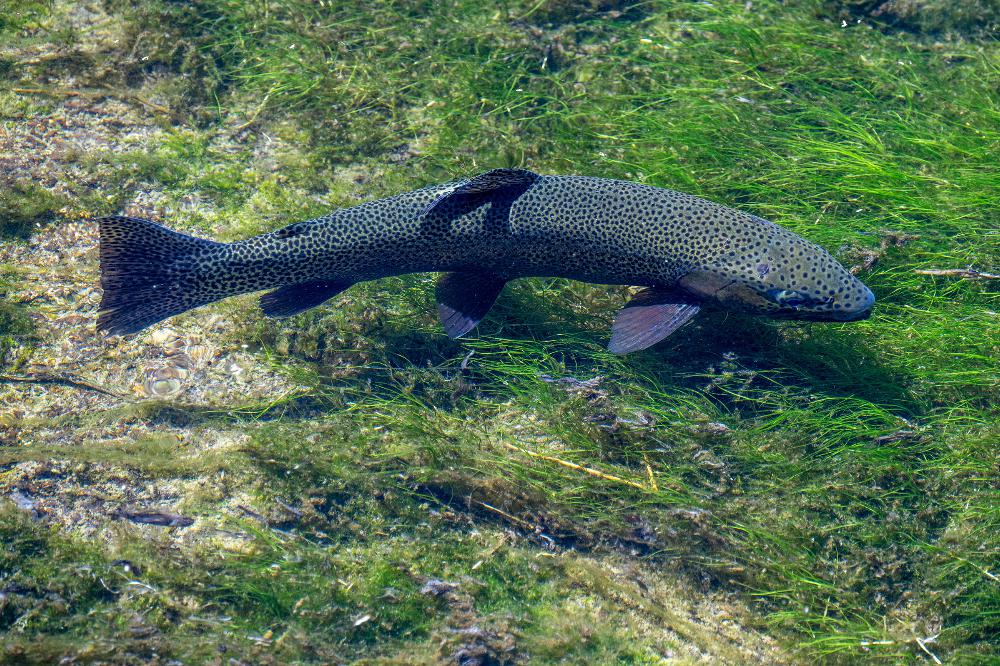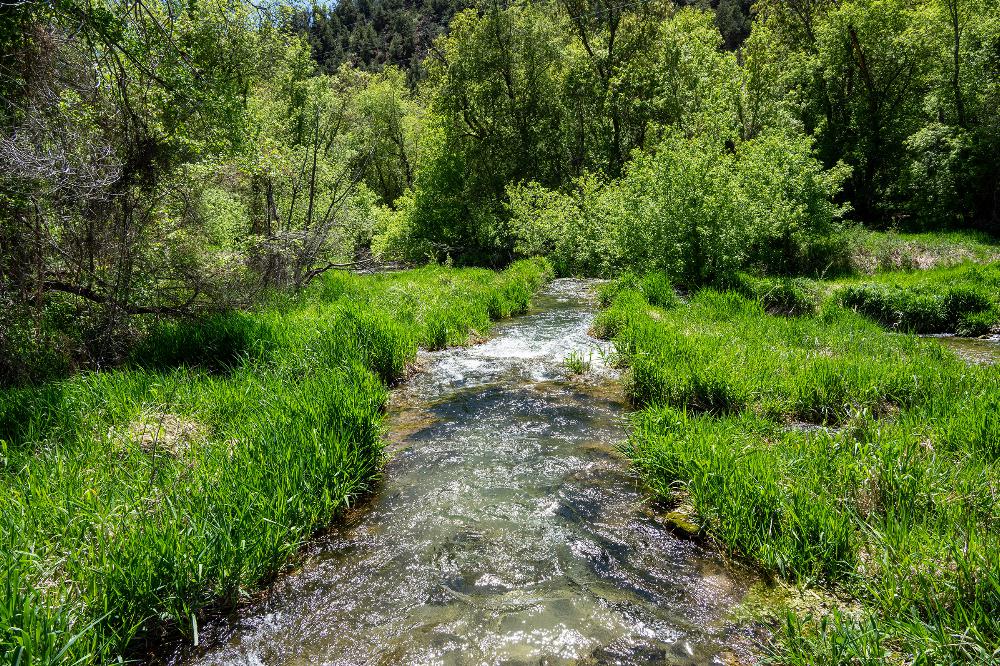After the Snow Melts: A Post-Skiing Road Trip out West
9
It’s always a sad moment hanging up the skis for the season.
But the mountains don’t just beckon me in the winter. They call to me in the spring, summer, and fall as well.
One of my favorite things to do is pack up the car and point it west, heading on a road trip to explore the mountains once the snow has melted.
At a younger age, this meant loading the car with a tent and sleeping bag.
Things got a bit more civilized a couple years ago when I achieved a long-held dream of purchasing a camper van. At less than 20 feet long, the van I purchased is (relatively) nimble and fits into a regular parking spot. Yet, it somehow manages to fit every creature comfort into it: a sofa bed, refrigerator, microwave, sink, induction cooktop, bathroom with shower, hot water, air conditioning and heat, and solar. To be fair, you’d have trouble cramming a family into it, and taking a shower in the almost comically tiny bathroom requires some challenging yoga poses.
But wow, what an upgrade from a tent on the bare ground.
I recently returned from my latest trip in the van, which took me from Maryland to Utah, hitting a variety of state parks, national forests, and national parks. The following are some photos I shot along the way.
The trip begins with a stop at Salt Fork State Park in Ohio. While there aren’t many tall mountains in Ohio, the state still offers a lot of beauty with well maintained and managed state park campgrounds. Photo by M. Scott Smith.
After a couple days of driving, I arrive in Kansas, a state that seemingly goes on forever. Still no mountains in sight, but Wilson State Park offers lakeside campsites. Photo by M. Scott Smith.
“Roughing it” in Kansas. Photo by M. Scott Smith.
The eastern half of Colorado is mostly agricultural, and I like to refer to it as “West Kansas.” It offers endless views and space. Photo by M. Scott Smith.
Somewhere on the open road. Photo by M. Scott Smith.
Finally, I arrive at the Great Sand Dunes National Park in Colorado, a place I’ve visited throughout my life. While much has changed over the years, the Sand Dunes look the same as when I first saw them as a little kid. In the spring, a fun little river forms at the base of the dunes, making lots of interesting gurgling sounds and constantly forging new paths through the sand. Photo by M. Scott Smith.
While Great Sand Dunes National Park is known for its dunes, it’s also set in a beautiful part of southwest Colorado, surrounded by impressive mountains. Photo by M. Scott Smith.
At night, the sky opens up with a breathtaking display of stars and celestial bodies. You can even see manmade satellites slowly arcing through the sky. I braved the frigid temperatures to capture some long exposures. Photo by M. Scott Smith.
After being warm enough to wear shorts during the day, Colorado did its typical U-Turn and decided to dump some snow on Great Sand Dunes. Photo by M. Scott Smith.
The snow-dusted Sangre de Cristo Range looks over the dunes. Photo by M. Scott Smith.
More astrophotography, hampered somewhat by a bright moon. Photo by M. Scott Smith.
The Piñon Flats Campground at Great Sand Dunes National Park is one of my favorite campgrounds. Photo by M. Scott Smith.
Back on the road, heading through southwest Colorado. Photo by M. Scott Smith.
Next stop: a few days at Colorado’s Mesa Verde National Park. I went on several ranger-led tours, including Balcony House, Cliff Palace, and Square Tower House. All tours require tickets and can sell out quickly. Photo by M. Scott Smith.
The sun sets at Mesa Verde. Photo by M. Scott Smith.
My camper van hiding in the trees at Mesa Verde. Photo by M. Scott Smith.
I leave Colorado and head into Utah, where I find a great national forest campsite under the stars. Photo by M. Scott Smith.
First stop in Utah: the Needles District of Canyonlands National Park, one of my favorite places on Earth. Hiking here is so fun and the weather was perfect. Photo by M. Scott Smith.
The slickrock terrain at Canyonlands is incredible. You really feel the presence of geologic time and the cumulative effects of weather here. Photo by M. Scott Smith.
Plants find the smallest collections of soil to eke out a living in this harsh environment. Photo by M. Scott Smith.
I next moved on to Utah’s Natural Bridges National Monument, which is very much off the beaten path yet offers some stunning terrain and hikes. It offers some of the beauty of Arches National Park, but without the miles-long line of cars trying to enter. Photo by M. Scott Smith.
I hiked down into the canyon, and had the most amazing terrain all to myself. For hours I explored twists and turns in the canyon, without ever seeing another human. Photo by M. Scott Smith.
I reached a dead-end which had a hidden lake carved into the rock and some zany acoustics. Photo by M. Scott Smith.
After the sun set, I hiked down to an arch to take some night photos, keeping an eye out for mountains lions I suspected were watching me. That’s not the sun in this photo (at least, not directly); it’s a near-full moon, which made it difficult to get star photos. It was so bright I could see my shadow. Photo by M. Scott Smith.
A 15-minute exposure captures star trails above the Utah sky. Photo by M. Scott Smith.
I’ve driven past the Rifle exit on I-70 near Colorado’s Glenwood Springs many times, but had never stopped there until this trip. I spent a couple nights camping at Rifle Falls State Park, most famous for its triple waterfall. Photo by M. Scott Smith.
The unique ecosystem at Rifle Falls creates an almost tropical environment in Colorado. Photo by M. Scott Smith.
A hike led upstream to fisheries and some newborn geese. Photo by M. Scott Smith.
Awesome pictures! Sounds like an epic trip.
Amazing photos!
In that neck of the woods, have you visited Colorado National Monument? Just a few minutes off of I-70 in Fruita/Grand Junction. Definitely worth a couple of hours. I've driven by it numerous times, and finally decided to stop there this past spring, heading from UT to CO.
And you're the second person in a month who has posted pix of Rifle Falls State Park. I need to add it to my list...
Hi JohnL! I have been to Colorado National Monument a few times, although didn't make it there on this trip. (I passed by and thought about it for a moment, but I was trying to get to my next campsite before it got dark so opted to skip it.)
If you go to Rifle Falls, there's a nice hiking trail that goes uphill from the Falls and ends up at a state fishery where they raise mountain trout. The Falls are the main draw, but I really enjoyed the hiking trail as it follows much of the river. Here are some more photos from Rifle Falls.




Scott, I can only imagine all the fantastic photos you have from this trip and others that we never get to see, many thousands! You ought to set up a youtube channel where they loop for eight hours accompanied by soothing music :-)
Love that pic from Mesa Verde. We were there in May of 2022, but couldn't get that close to the cave dwellings. We just drove around the rim of Canyon de Chelly on 31 May 2025. It was awesome, but the dwellings we saw were not as extensive as Mesa Verde.
Thank you so much. We too have been to most of those places but the new perspective is always great. And your pictures are perfections. More motivation to return. And what a nice camper experience. It looks like you had entire campsites to yourself.
Wow, Scott, those pictures are AMAZING. How long would you say you spend setting up a single shot when you're doing landscape photography like that? Is it a multiple-day process to get the best light?
Thanks everyone! eggraid: Other than the night shots (which require a bit of setup and patience), I just shoot as I'm hiking or see something interesting at the side of the road as I'm driving. I just have the camera around my neck (a bit heavy, alas) and don't fuss with bringing extra lenses or a tripod. I'm usually only in a place for a day before moving on, so can't count on weather or lighting being perfect. But in any given trip, there will be lots of serendipitous moments. (Such as waking up and seeing snow at Great Sand Dunes, or mist rising up from the ground.)
If I'm in an area where I think I might get good night shots or do some astrophotography, I try to scope out the area during the day so I'm familiar with it (mostly to identify any hazards), or I arrive before sunset to get the lay of the land. Unfortunately, more often than not, clouds seem to roll in at night just before the stars come out. I learned long ago never to plan for any particular shots and simply let nature surprise me.
Amazing photos Scott. Thanks. Incredible beauty, and soothing calm. I had not been reading DC Ski for a wile. My mistake.
Great pics Scott. I'm envious. I'm hoping to follow your lead but physical issues may prevent it. I'll just enjoy your adventure and pretend I was with you.




